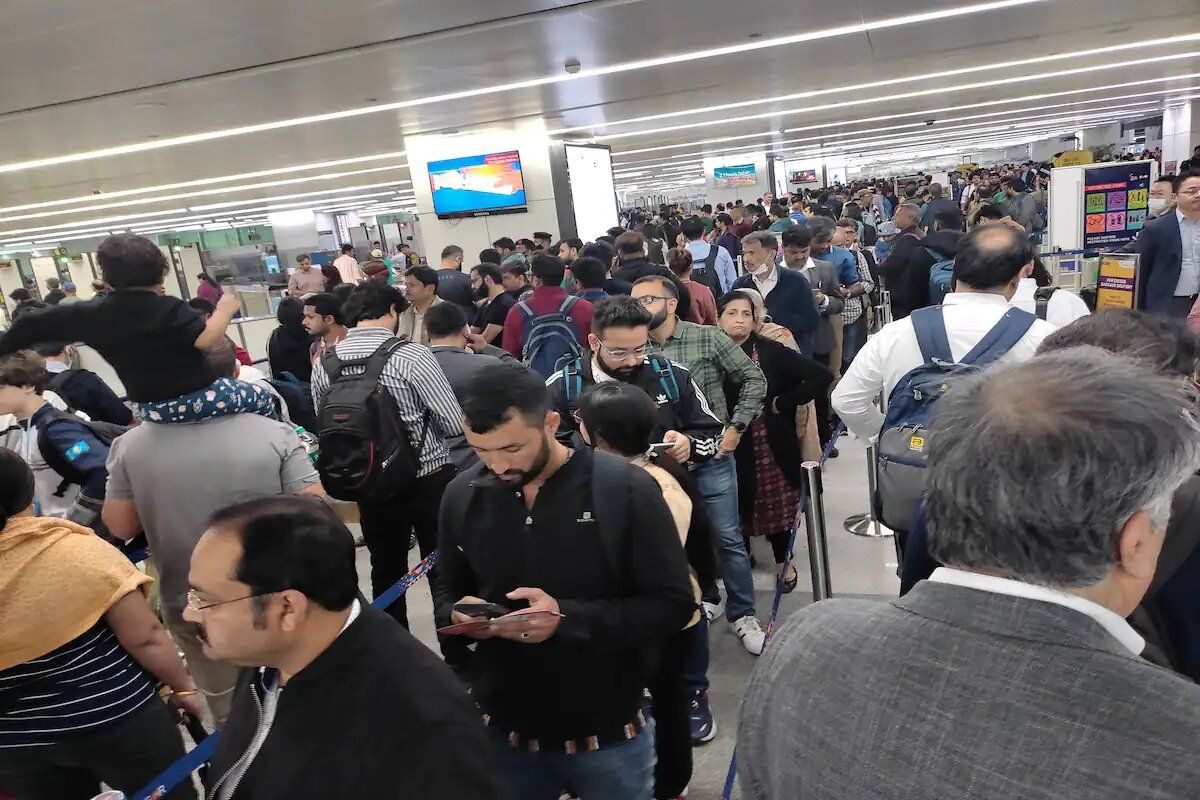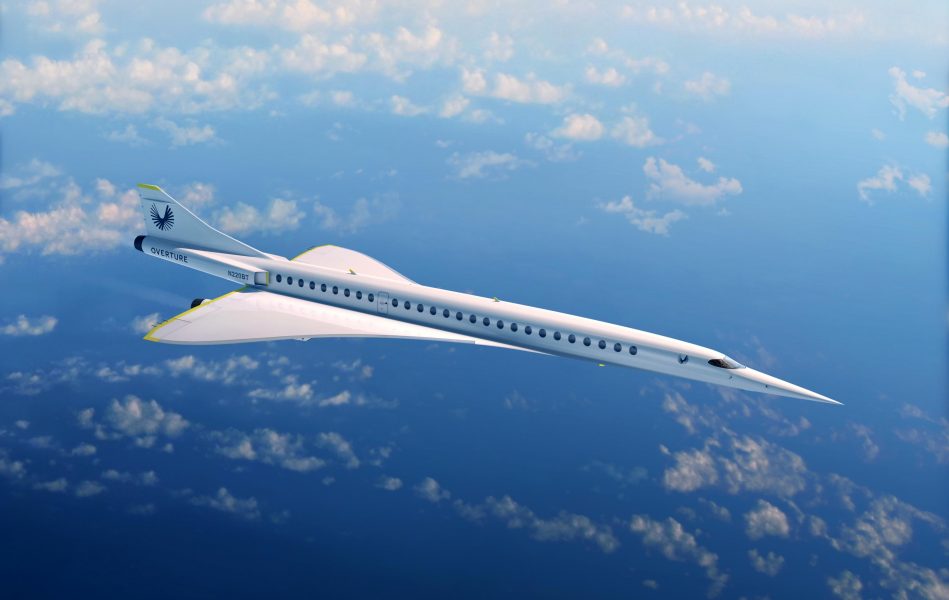With Christmas only a few weeks away, Santa Claus has begun his world tour. With travel restrictions being lifted around the world, the jolly fellow Santa Claus is switching from Rudolph’s sleigh to his official airline, Finnair, Finland’s national flag carrier, to visit India for the first time. After a stopover in Singapore and Tokyo, Santa made his way to India to spread the Nordic Christmas cheer.
Santa Claus exchanged high-fives with children and passengers upon arriving at Chhatrapati Shivaji Maharaj International Airport on December 15. He will be in Mumbai from December 15th-18th where he will be visiting events such as IIT-Bombay and spreading good cheer in hospitals, such as King Edward Memorial Hospital.
Santa will also be coming to Phoenix Palladium on December 18 between 3-7 PM IST and will be meeting children and their parents in the mall. All the engagements in Mumbai have been jointly organized by Finnair and Visit Finland.
Finnair brings Santa Claus to India for the first time
Before coming to India, Santa was in Tokyo and Singapore early this month. Looks like Santa has been busy travelling to bring joy and festivities to improve the well-being of the children of the world while maintaining the global image of Finland as the true Christmas country and homeland of Santa Claus.
ALSO READ - Finnair to launch a direct flight between Mumbai and Helsinki
As Finland’s national flag carrier, Finnair regularly flies to Rovaniemi, the official hometown of Santa Claus. The carrier added Mumbai as its second destination in Summer 2022 and operates from Mumbai and Helsinki three times a week, i.e., on Wednesday, Friday, and Sunday, connecting Indian travellers smoothly to and from Finnair’s vast network including Rovaniemi.
This is a popular travel destination for those visiting the Santa Claus Village, which is open year-round for guests to visit Father Christmas and soak in the charming festive atmosphere. Visitors can admire the Finnish design within the village’s wooden buildings as they send Christmas cards to loved ones and explore atmospheric restaurants, cafes, and gift shops alongside other attractions.
The carrier added Mumbai as its second destination in the Summer of 2022 and operates from Mumbai and Helsinki three times a week
Since 1983, Finnair has been the Official Airline of Santa Claus. At the heart of this relationship is the airline’s collaboration with the Santa Claus Foundation, which aims to boost children’s well-being across the globe. This traditionally referred to flying Santa on goodwill tours of Europe and Asia annually and hosting charitable projects to generate funds supporting education in Nepal.
Finnair is a network airline, specializing in connecting passenger and cargo traffic between Asia and Europe via the short northern route. Sustainability is at the heart of everything we do – Finnair intends to reduce its net emissions by 50% by the end of 2025?from the 2019 baseline?and achieve carbon neutrality latest by the end of 2045. Finnair is a member of the OneWorld alliance.
Read next
VietJet Air sold flight tickets from Bengaluru even though it has no service from the city
Radhika Bansal
15 Dec 2022
Vietnamese low-cost carrier VietJet Air reportedly sold flight tickets from Bengaluru to several travellers even though it has no service from the city, according to a report in the Times of India. As per the report, many travellers have booked their Vietjet flights via 'well-known ticketing portals' but are now struggling to get a refund for their tickets for the non-functional flight routes.
Reportedly, tickets from Bengaluru to Vietnam were on sale till November with attractive offers, until affected buyers complained on social networks about the non-existent flights.
VietJet Air sold flight tickets from Bengaluru even though it has no service from the city
"While some other Bengalureans who had booked VietJet flight tickets received emails about the flight cancellation, many, including Ramesh K and his partner from Basavanagudi, were shocked to find there is no VietJet flight from Bengaluru," according to the TOI report.
A couple from Bengaluru, Dilip Ranganath and Arpita, told TOI that they spent nearly INR 1 lakh on tickets and hotel bookings, but now they are struggling to get a refund.
"I received an SMS a few days ago mentioning that our flight journeys from Bengaluru to Hanoi, Hanoi to Danang, Danang to Ho Chi Minh and Ho Chi Minh to Bengaluru were all cancelled due to operational hurdles. Having spent nearly Rs 1 lakh on the holiday, including for air tickets and hotel bookings, we desperately tried to reach the VietJet Air helpline numerous times but there has been no response," Dilip told the Times of India.
VietJet Air announced in July this year that it will begin direct flights from Bengaluru to Vietnam in the first week of November
ALSO READ - Vietjet to connect the coastal city of Da Nang with 5 Indian cities
Notably, VietJet Air announced in July this year that it will begin direct flights from Bengaluru to Vietnam in the first week of November, but the airline has yet to begin service. According to the Times of India, the Vietnamese carrier has put off its plans to launch services from Bengaluru till December 2023.
According to the report, VietJet India has offered passengers the option to reschedule their Bengaluru flight from Mumbai or Delhi to Vietnam at an additional cost, "but refunds for tickets for the non-operational Bengaluru leg were declined." The airline representatives, however, gave the option of a credit note for future travel with the airline.
(With Inputs from The Times of India)
Read next
Union Home Secretary Ajay Bhalla reviews congestion at Delhi & Mumbai airports
Radhika Bansal
15 Dec 2022

Union Home Secretary Ajay Bhalla recently convened a meeting with key stakeholders, to look into the issue of crowding at airports, especially in Delhi and Mumbai. The meeting comes in the wake of a series of complaints from passengers regarding long lines and queues, as well as the rush at the entry gates, luggage dropping area as well as in security check areas.
Representatives of key stakeholders such as the Civil Aviation Ministry, airport operators, CISF, and Bureau of Immigration are expected to attend the meeting, an official said.
Over the last two weeks, passengers have been posting pictures and videos of long queues and crowds at the IGI in Delhi and the Chhatrapati Shivaji Maharaj International Airport in Mumbai prompting authorities to take note and ask airlines and airport operators to ease the traffic.
The Central Industrial Security Force (CISF) has formed a pool of more than 100 personnel to man additional security counters expected to be handed over to it to ease the congestion at large airports of Delhi and Mumbai, official sources said.
The central paramilitary, designated as the national aviation security force, has informed airport operators, airlines, and the Union civil aviation ministry that while it can bring on board some more security personnel, there can be "no compromise on security protocols and standard operating procedures followed by it for regular frisking of passengers and scanning of cabin baggage apart from fliers required to undergo extensive search due to specific profiling."
The civil aviation ministry had asked airlines to deploy adequate manpower at all check-in and baggage drop counters, besides requesting the scheduled airlines to update their social media feed with real-time numbers on the waiting time at airports' entry gates.
The continued commotion at the airports has forced airlines to ask passengers to reach airports early, do a web check-in, and carry only one piece of hand baggage for faster movement.
Read next
A vital but difficult task is evaluating the performance of the airspace of the future, which will include, for example, thousands of drone deliveries and air taxis. The new and developing technologies of unmanned aircraft systems (UAS) also present a number of difficulties for the air traffic control systems of the future. These problems today require increasingly automated and computerized solutions.
Airbus UTM is creating a proprietary simulation environment called USim to investigate how future airspace will function in order to better comprehend today's skies.
USim
USim's primary function is to simulate vehicles and operators, enabling researchers to investigate key elements of flight operations such flight planning and the effects of navigation error and other noise on vehicle performance.
Representative | acubed.airbus
A collection of prototype UTM services is also included in USim, allowing researchers to simulate more operationally pertinent scenarios, apply ideas like strategic deconfliction, and assess the ramifications in terms of outcomes like safety, efficiency, and fairness. Researchers can investigate the UTM architecture that will allow for the takeoff of future activities thanks to these simulation capabilities.
Researchers are able to gather thorough data from the viewpoint of a wide range of stakeholders, from tiny drone operators to commercial air traffic, and develop credible data to inform UTM industry standards by investigating UTM in a simulated environment.
Getting started
Using USim, researchers can produce this library of data and test for a wide range of variables at scale because of advancements in processing power. Running tens of thousands of test flights in the real world would be expensive and impractical, but USim can simulate tens of thousands of flight hours quickly, enabling simulation of tens of thousands of operations in a short amount of time and generating statistically valid data from which meaningful conclusions can be drawn.
For instance, machine learning makes it easier to detect and investigate failure scenarios in simulation when stress testing a system than it would otherwise be for researchers to foresee.
Researchers can now employ simulation as a collaborative tool by simply developing and packaging services that would otherwise become obsolete in the face of developing UAS technology thanks to advancements in cloud computing. Future stakeholders can profit from an agile simulated environment by utilizing digital twin technologies employing a software as a service (SaaS) strategy.
Real-time use cases
The NASA principles of operation for Advanced Air Mobility (AAM) operations in the United States are already being validated and developed using USim. One of seven business partners chosen for a round of airspace simulations as part of NASA's AAM National Campaign to evaluate an airspace management system that enables partners to safely and cooperatively control their operations was Airbus UTM, which is owned by Airbus.
Additionally, Airbus UTM has used USim in partnership with EUROCONTROL to examine the performance and safety of upcoming U-Space operations across Europe and to highlight the value of simulation in U-Space airspace assessment.
https://www.youtube.com/watch?v=v2dGoJwsQJU
U-Space is a set of rules and services designed to make it easier for large-scale drones to access European airspace in a secure, reliable, and safe manner. It is slated to become effective in 2023. Additional applications of USim have been made in the context of the European ATM R&D initiative (SESAR).
Future applications
Although simulation cannot take the place of flight tests, the information it may produce will give a thorough image of the future airspace, making flight tests safer and more effective.
Representative | Airbus
Advances in simulation technology enable researchers and stakeholders to jointly develop and integrate emerging UAS with greater agility, ensuring safer, more effective future skies. Airbus UTM's Usim doesn't just support the development of UTM infrastructure; it also supports the development of UTM infrastructure itself.
SOURCE: acubed.airbus
COVER: Airbus
Read next
Boom Technology, an aviation startup, claims that it would use engines developed by a company known for producing small engines to power supersonic jets.
Boom announced on Tuesday that GE Additive, a branch of General Electric, will assist Florida Turbine Technologies, or FTT, in designing the engines.
According to Boom, the aircraft might conduct test flights in 2026 and begin carrying passengers a few years later. According to the company, its Overture 88-seat jet will have four engines, reach a top speed of 1,300 mph, or 1.7 times the speed of sound, and run on sustainable aviation fuel.
The Denver company was criticised heavily in the aviation community for its aggressive pace and conviction that supersonic passenger flights may be both financially and environmentally advantageous. Concorde, a supersonic aircraft that flew transatlantic routes, was neither and it ceased operations in 2003.
Throughout the 27-year history of Concorde operations, there had only been one tragic accident.
Air France Flight 4590, a Concorde passenger aircraft operating as part of an international charter from Paris to New York, crashed on July 25, 2000, shortly after takeoff, killing all 109 aboard as well as four individuals on the ground.
Air France Flight 4590 crashed on July 25, 2000, shortly after takeoff
On October 24, 2003, the supersonic Concorde jet performs its final commercial passenger flight, flying from John F. Kennedy International Airport in New York City to Heathrow Airport in London at twice the speed of sound.
British Airways' last Concorde flight departed on October 24, 2003
It will be difficult to get the plane licenced since regulators are being extra careful following two fatal Boeing Max crashes.
To prevent sonic boom damage, flights would probably be restricted to ocean crossings or would need to slow down over land.
Also read: A new supersonic corridor unveiled?
“I understand that people say Boom's got its work cut out for us. People who think we're not going to get there I look forward to having them on board a flight.”
–Blake Scholl, CEO & Founder, Boom Technology
Boom also recently updated the design of Overture. The lack of an engine for Overture has been a major source of doubt. After generating some engineering studies, Rolls Royce abandoned its partnership with Boom early this year, and other top engine manufacturers signalled they had little interest in stepping in.
Boom Overture
Also read: Boom Supersonic unveils updated “Overture” supersonic airliner design
Before choosing FTT, which is primarily owned by Kratos Turbine Technologies, and GE Additive, which is better renowned for 3D printing than for aerospace manufacturing, Boom reportedly considered a number of other engine designs and producers, according to Scholl.
Scholl claimed that Boom will save money by creating a brand-new engine from scratch rather than modifying an engine created for subsonic flight. According to him, this will be the first engine made specifically for sustained commercial supersonic flying.
Although neither airline would disclose how much they put down, American Airlines and United Airlines have made deposits for upcoming Overtures.
Boom intends to construct Overture in Greensboro, North Carolina, in part due to the city's proximity to an ocean where the planes may be tested without shaking nearby buildings' windows.
(With inputs from Denver7)
Read next
India's first human-carrying prototype– Bumble Bee flights, will debut in April 2023 and will establish an assembly in Odisha for the production of air taxis.
On Tuesday, December 13, Bangalore-based Bumble Bee Flights Pvt Ltd announced that SRAM & MRAM Technologies and Resources Ltd. of the UK had invested Rs 300 crore ($37 million) in the company.
According to the company, the money would be used to establish an assembly plant in Odisha for the production of air taxis. The start-up has created and developed India's first autonomous Air Mobility Solution capable of human transportation with multiple use case scenarios.
Bumble Bee is India's first autonomous Air Mobility Solution capable of human transportation with multiple use case scenarios
The Bengaluru-based startup, which was established in early 2022 by serial entrepreneur and expert in Air Mobility Solutions Arjun Das, would use the money to establish an assembly facility in Odisha for manufacturing the air taxis, which may be used for logistics, leisure, or even defence applications.
By April 2023, the business hopes to release the first prototype. By 2024, Bee Flights, a brand owned by Bumble Bee Flights, will be producing certified and producible air taxis. Additionally, compared to helicopters that weigh up to 1000 kg or more, Bee Flights' air taxis would be powered by solar-charged interchangeable batteries and would weigh only 300 kg.
In contrast to helicopters, which require specific helipads, they can carry one person and one bag and can land on the rooftops of buildings if there is enough room. These flying taxis can go 20 kilometres in 20 minutes.
Bumble Bee Flights will collaborate with operators from all around the world to service, support, and manage the operations of these air taxis while designing and manufacturing them.
In the meanwhile, getting a certification for the US, UK, UAE, India, and Singapore would be the first stage.
Also read: The first self-flying four-seater, eVTOL air taxi unveiled by Wisk
“eVTOL (electric vertical take-off and landing) aircraft are the future of urban mobility and transport. These autonomous air taxis would not only ease the already burdened urban road infrastructure but will also work towards reducing carbon footprints.”
–Arjun Das, Serial Entrepreneur & Expert in Air Mobility Solutions
Also read: Is eVTOL currently a possibility or already a reality?
He went on to say, "We are like the Boeing or Airbus for Air Mobility Solutions," pointing out that Bee1 is the first Indian air taxi to receive certification in multiple nations and that it will be used for a variety of tasks, such as human transportation, air ambulance, air taxi, and in the logistics and supply chain sectors.
The money was given to the startup at the recently finished Make In Odisha Conclave 2022.
Bumble Bee was funded to establish an assembly plant in Odisha for the production of air taxis; was unveiled in the Odisha Conclave 2022
According to Das, this is also a step towards putting India and Odisha on the world map for air mobility solutions.
Urban air mobility, or UAM, is expected to experience 30% annual growth between 2021 and 2040, reaching $1.5 trillion. This was estimated by the company named Morgan Stanley. Morgan Stanley is an American multinational investment management and financial services company.
Arjun Das looks positive about the start-up and claims that Bumble Bee would be as simple as ordering a taxi from Ola or Uber!
(With inputs from Business Today)






Comment